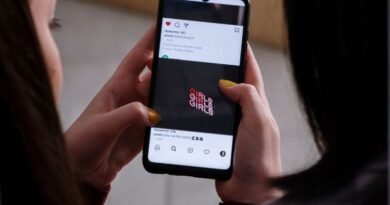Why Do Snapchat Streaks Matter and What Are They?
Snapchat streaks, also known as Snapstreaks, are the number of days in which you were successful in sending a photo or video snap to a buddy on the app. Snapstreaks are what high school students use to identify their friendships. In essence, it means that two pals communicate regularly via sending snaps. Your kids may have mentioned delivering snaps rapidly so they wouldn’t lose their streak, but you had no idea what they were referring to. We’re going to teach you all you need to know about Snapstreaks, how Snapstreaks operate, and whether or not they should worry you since it’s always vital to be aware of what the kids are doing.
How Do You Begin a Snapchat Streak?
For a Snapstreak to begin, you and your pal must exchange snaps for three days in a row. You’ll see a fire emoji next to your Snapchat friend’s name while you’re on a streak together. Other Snapchat emoticons connected to Snapstreaks include a number of others. For instance, you’ll also notice a number next to the fire emoji when your streak with your pals’ increases. Snapchat will add a red “100” emoji if your streak is 100 days or longer.
You’ll notice a mountain emoji next to someone’s name when you have an even longer streak with them, possibly with your best buddy. You’ll see the hourglass emoji next to your buddy’s name if your Snapstreak is set to end, meaning neither you nor your friend has sent any snaps within a 24-hour span. This implies that in order to maintain your Snapstreak, your friend must also send at least one snap in return each day.
However, you can get in touch with Snapchat support if you think you and your friend exchanged snaps but the streak was still lost.
How Can We Continue the Snapstreak?
Sending your friend a photo or video snap and getting one back every day is the only way to maintain your Snap streak. Many other activities you engage in while using Snapchat don’t contribute to your streak. The items on the list below won’t support you in continuing your Snapstreak:
- Speaking with a buddy
- Sending a photo or video snap to several Snapchat users at once (However, this might increase your Snapchat score)
- Snaps you send to other Snapchat users from your Memories without clicking them first
- Adding Snapchat stories to your account
- Any films you’ve captured with your Snapchat glasses
Snapstreaks: Why Do They Matter?
A lengthy streak is a sign of enduring friendship among young people. Consider a streak as a numerical measure of the degree of friendship between two people. It resembles a youth tournament in many ways. A person’s relationship with their closest friend is viewed as stronger if they have a longer streak together. And everyone competes to have the longest streak in order to demonstrate the depth of their relationship. It’s simple to understand how this can be an issue.
There is pressure to continue longer streaks, thus responding to snaps despite other considerations is necessary. Children who believe that others have closer relationships with their friends than they have with their own might experience challenges with self-esteem as a result of snapstreaks.
Do Snapstreaks Cause Parents Concern?
No, never. It’s inappropriate to force your youngster to deactivate their Snapchat account and to immediately demonise Snapstreaks. Contrarily, Snapchat may be a useful tool for providing information to parental control applications about the people that kids contact with. However, if you notice something you don’t like, such as your youngster playing with a person you don’t feel especially sure about, you might want to think again. When youngsters are concentrated on an emotionally satisfying activity, such as setting a new peer group record for the longest Snapstreak, it is simple for them to lose control. Obsession is a possible issue when this occurs.
Is it OK to forbid your child from keeping snapstreaks?
Most often, snapstreaks are an expression of your child’s relationship with a close buddy. They are not necessarily dangerous. You may, however, have a family chat about how keeping up Snapstreaks isn’t fun and how going above and above isn’t actually advantageous.It’s also critical to understand that a Snapstreak will probably end eventually. Your youngster will be distracted by a family visit, a birthday celebration, or a vacation.If you think it’s necessary, you may think about making minor adjustments to the child’s schedule to give them less time to use particular social networking sites. In worst-case scenarios, you can utilise parental settings to stop the kid from incessantly using the Snapchat app.
FAQs
Describe Snapchat.
For both iOS and Android devices, there is an app called Snapchat. Users of the software frequently refer to it as Snap in informal settings.
Confusionally, a publicly traded firm also called Snap serves as Snapchat’s developer. The business describes itself as a camera firm. (As a result, it produces more goods, such as hardware similar to Snapchat Spectacles.) Whatever name you give it, Evan Spiegel, a co-founder, is in charge of Snap.
One of the fundamental ideas behind the smartphone app is that any image, video, or message you send, known as a “snap,” is by default only made accessible to the recipient for a little period of time before it disappears. The app’s transient or fleeting feature was initially intended to promote a more organic flow of engagement.
What does Snapchat serve?
Although Snapchat’s original focus was on private, person-to-person photo sharing, you can now use it for a variety of purposes, such as sending videos, live video chatting, messaging, creating Bitmoji-like caricature avatars, and sharing a chronological “story” that is broadcast to all of your followers. There is even a special “Discovery” section that highlights condensed material from well-known publishers like Buzzfeed. Snapchat even enables private media storage.
You can also show your current location on a map of the whole planet and add filters and AR-based lenses to your photos, among other capabilities. But the most important thing to understand about Snapchat is that it revolves on instant messaging on your phone. Social networking was primarily desktop-based until Snapchat. For instance, you could publish status updates, tweets, and images online and keep a record of all of them so that you could all view them in the future and receive comments from your friends.
Snapchat revolutionised internet communication. With Snapchat, you can immediately send a buddy a picture of you wearing an outrageous AR lens, and as soon as they open it, it vanishes forever. Technically, they have the option to screenshot the message and respond with a photo or video that they may also broadcast to their narrative for the benefit of their friends and followers. This software has so many applications. It’s difficult to deny its worth and the reasons it’s special.
What do all the jargon terms mean?
According to several articles and surveys, millennials and members of Generation Z make up the majority of Snapchat’s users.These younger users have led to a variety of new, original titles and names for the app’s capabilities, from “snaps” to “story.” Before you continue to the portion of this Snapchat tutorial that explains how the app functions, you should absolutely go through the Glossary section if all this terminology is confusing you.
Snap:
A “snap” is when you shoot a snapshot or a video or when you get one. Therefore, when someone requests that you “snap” them, they are requesting you to send them a Snapchat picture, video, or even a message using the chat feature of the app. Along with the app’s creator/public corporation, Snapchat is also commonly referred to as “Snap,” in both formal and informal contexts.
Snapback:
This expression peaked in use before Snapchat launched but has subsequently declined. However, if you’ve heard it, just be aware that it only denotes a response to a snap. As a result, when you Snapback, you are just responding to a personal one-on-one snap that you have received.
Story:
You may broadcast and connect together photos as you take them. Your followers will see them as a “story” reel. They may swipe through your tale and view each image to see the whole day. A reel may only be seen for 24 hours before it permanently vanishes, but you can always save your complete tale or a specific snap from it to the Memory area, also known as private storage, on Snapchat.
Snapchat:
Snapchat is a scannable program that streamlines the process of adding new friends. For instance, a buddy doesn’t need to painstakingly search for their handle and push the “add” button; they can simply point their Snapchat camera at your Snapchat and you’ll be added right away. You may find your Snapchat, which resembles a QR program, on the Profile screen. By touching the ghost icon or your Bitmoji in the corner of the Camera screen, you can get to it.
Ever notice the score next to a friend’s Snapchat handle? The amount of snaps they’ve sent and received, tales they’ve shared, and other things are included into the calculation that determines their score. When you press down on a friend’s name in your contact list, news feed, or chat area, you may see their score. And on your Profile screen’s central Snapchat, you may discover yours there. The more you use Snapchat, the higher your score is going to be.
Snapstreak:
In the Chat area of your Snapchat, you could notice that some of your friends or the people you follow have various emojis next to their Snapchat names. This indicates that they are Snapstreaking with you. In other words, you and that buddy or pals have snapped each other for more than one day in a row (excluding chat messages). Go to Settings > Manage > Friend Emojis for a detailed explanation of what each friend emoji represents.
Trophy case: When you receive a notification from Snapchat about a new trophy you’ve earned, tapping it will take you to your trophy case, where all the trophies you’ve won for milestones as a Snapchat user are stored. Trophies promote user interaction and content creation, whether it’s sending one photo with a filter or fifty photos with five or more different pen colors.
With the help of a feature called Lenses, you can add augmented reality-based sound effects and special effects to photos to make them even more entertaining. Go to the Snapchat Camera screen, long-press on your face while it is being captured, and lenses should start to appear next to the capture button. To take a picture with it, swipe around to find the lens you want, then tap the capture button. Popular lenses include “dog with tongue” and “rainbow puke.”



